In the realm of fashion, we stand on the precipice of a revolution, spearheaded by the advent of artificial intelligence.
Our capacity to blend creativity with technology has given birth to incredible tools that are reshaping the fashion industry at its core.
With AI, we’re witnessing the crafting of designs that would have been unimaginable a few years ago. It’s our guiding light in predicting trends, personalizing customer experiences, and streamlining manufacturing and supply chain processes.

Our exploration into generative AI is like refashioning our very wardrobe with smart, self-styling garments.
These advanced algorithms have the ability to concoct novel designs by learning from vast datasets of images, styles, and fashion parameters.
Imagine a world where the typical sketches of designers are transformed into detailed, ready-to-produce digital models with just a few commands. AI is not just a tool in our arsenal; it has become the innovative designer sitting next to us.
The potential for AI to enhance our understanding of consumer behavior and personalize fashion to an individual’s taste is not just groundbreaking—it’s style setting.
With the help of AI in fashion, we’re able to offer advice on wardrobe choices that are tailored, as if each piece of clothing were a close friend who knows us inside out.
It’s safe to say that these smart algorithms may soon become the most trusted personal stylists we’ve ever had.
Evolution of AI in the Fashion Industry
Before diving into the historical accomplishments and groundbreaking partnerships in AI fashion, we must acknowledge the undeniable synergy between artificial intelligence and the ever-evolving world of style.
Here’s a snapshot of how AI has revolutionized the fashion landscape.
Historical Milestones
- 2000s: Discovery Phase
- Early 2000s marked the inception of AI in fashion with rudimentary style prediction algorithms.
- 2010s: Integration Era
- AI began transforming online shopping experiences, offering personalized style recommendations.
- 2020s: Innovation Explosion
- Generative AI surged, leading to hyper-customized design and manufacturing processes.
Key Players and Partnerships
- Stella McCartney & Google Cloud: A Sustainability Powerhouse
- Their partnership is a beacon of eco-friendly innovation with AI’s supply chain transparency efforts.
- McKinsey & Fashion Titans: The Profit Maximizers
- McKinsey’s insights have boldly forecasted generative AI’s potential to boost the industry’s profits significantly.
AI-Driven Design and Creativity
Revolutionizing the way we create, AI-driven design marries the precision of technology with the raw emotion of creativity.
Generative AI for Apparel
Let’s cut to the chase: generative AI isn’t just a tool—it’s our next great co-designer.
By digesting mounds of data, these clever algorithms are injecting new life into fashion design.
They pull from past trends and current hypes, creating designs that can dart from quirky to quintessential in a flash.
For us, these AI-based designs are more than just patterns; they’re potential waiting to be stitched.
- Inspiration: Generative AI sifts through global fashion trends, optimizing the brainstorming process.
- Customization: Offers uniquely tailored suggestions, ensuring each design feels personally crafted.
Emerging Designers and AI Collaboration
Buckle up, rising stars of the fashion world! Collaboration with AI is like having a mentor that never sleeps.
These emerging designers are finding that AI’s deep analytical abilities help predict consumer preferences, leading to game-changing innovations in design.
It’s a blend of intuition and analysis, of art and intelligence, and honestly, it’s nothing short of amazing.
- Development: New designers can leapfrog traditional barriers by access to advanced AI tools.
- Efficiency: AI accelerates the design process, from ideation to virtual prototype to final product—zippy, isn’t it?
Marketing and Customer Experience Enhancement

In today’s fashion industry, we stand at the intersection of technology and artistry, where innovative marketing and enriched customer experiences take center stage.
Personalized Shopping Experiences
We harness the power of artificial intelligence to tailor shopping journeys to individual style preferences.
Imagine logging into an online store and being greeted with curated fashion selections that feel handpicked just for you.
Vogue Business underscores the growing excitement for AI’s role in fashion personalization, indicating that consumers are more than ready for a revolutionized shopping experience.
Innovations in Advertising Strategies
We’re crafting advertising strategies that are as responsive and dynamic as the fashion pieces they showcase.
By integrating AI, our campaigns evolve in real-time, connecting with customers on a deeper level.
Picture an advertisement that adopts your local weather to suggest the perfect outerwear—advertising, but with a clever twist!
Retail and E-Commerce Transformation

Retail and e-commerce are rapidly evolving, with AI leading a revolution that has forever changed the way we shop online.
Virtual Try-On and Avatars
We’re witnessing a surge in e-commerce platforms, like Zalando and Shopify, embracing AI-driven virtual try-on solutions.
This innovative feature boosts shopper confidence and satisfaction by providing a realistic preview of clothing fit and style, without setting a foot in the store.
AI-Optimized Logistics and Returns
Our e-commerce logistics have never been smarter, thanks to AI.
Sophisticated algorithms are optimizing everything from inventory management to shipping routes, ensuring that our products reach customers faster than ever.
On the flip side, AI assists in streamlining the returns process, making it less tedious for customers and less costly for retailers.
With such tech at our fingertips, we’re taking strides toward a future with fewer lost packages and happier customers.
Data Analytics and Consumer Insights

Data analytics fuels our understanding of customer behavior and sharpens how we predict and respond to fashion trends. It’s the crystal ball revealing what buyers crave next.
Trend Forecasting
We harness complex machine learning algorithms to sift through volumes of data, transforming them into actionable trend forecasts.
Statistical models analyze buying patterns; social media activity and search trends, among others, to spotlight what’s hot and what’s not.
By leveraging this data-driven approach, we can almost read fashion enthusiasts’ minds, predicting which styles will appear in their closets.
Here’s a glimpse of how we leverage data:
- Past Sales Data: Highlights winning and losing designs.
- Social Media Trends: Pinpoint upcoming colors and materials.
Example: Our data told us chunky sneakers were a hit—now everyone’s feet agree!
Product Development Insights
When we peek into data’s treasure chest, product development transforms from guesswork to science.
Machine learning allows us to extract deep insights, informing us about consumer preferences on colors, materials, and designs.
Just like a master chef knows the perfect spice blend, our data mix tells us precisely which product features will tantalize fashion palates.
Our analytics in action:
Color Popularity Analysis:
- Most Desired: Ocean blue.
- Least Desired: Neon green.
Design Patterns Analysis:
- Trending: Floral embroideries.
- Fading: Stripes.
Technology Integration and AI Tools
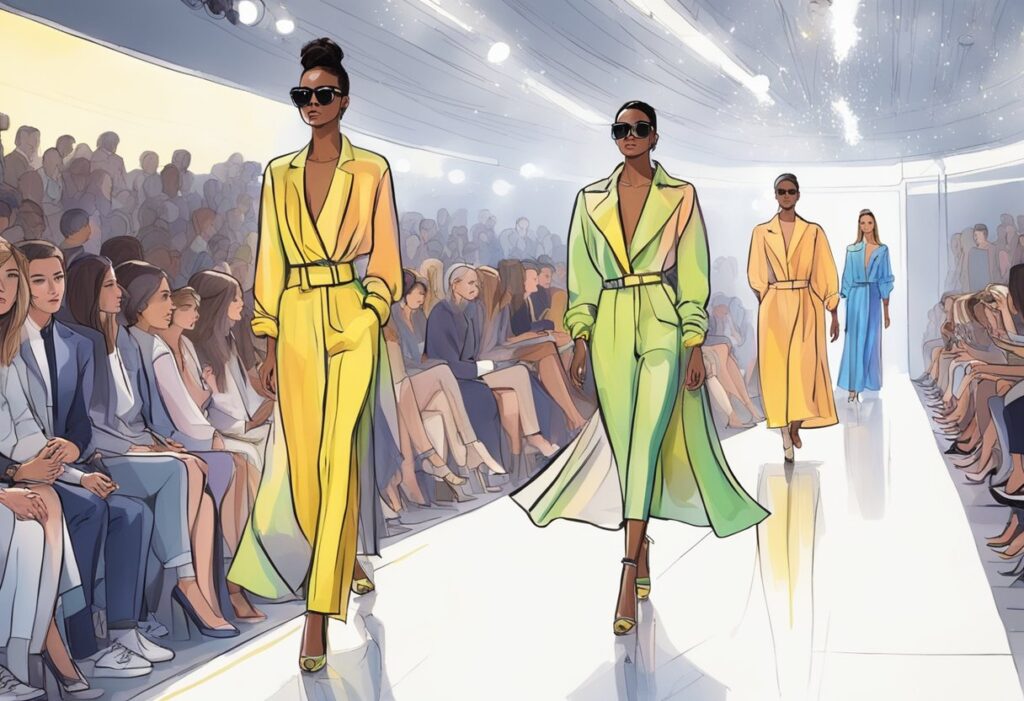
As trends in fashion rapidly evolve, we harness cutting-edge AI tools to revolutionize how we create and market clothing. The integration of technologies like computer vision and natural language processing has not only streamlined our processes but also pumped a fresh dose of creativity into the mix.
Computer Vision in Merchandising
We’ve seen firsthand the dazzling impact of computer vision on merchandising. Our tech allows us to pinpoint nuances in consumer behavior and preferences just by analyzing images. This means we can map out management strategies and inventory control with accuracy that would make a sharpshooter envious.
Beyond the basics, tools like DALL-E are like the wild card up our sleeve, letting us predict and design future-fashion favorites on the fly.
Natural Language Processing for Product Descriptions
ChatGPT and its ilk are nothing short of wizards when it comes to churning out product descriptions that do more than just describe – they entice. By leveraging natural language processing, we sling snappy blurbs that turn browsers into buyers.
Forget bland; our AI-spun yarns cast a spell of charm on even the simplest of threads. Picture it: fabric descriptions that make silk sound like the whispers of angels or denim like the epitome of rugged sophistication.
AI for Business and Operating Efficiencies

Artificial Intelligence (AI) is transforming how we boost efficiency and profits, ensuring businesses stay ahead in the fashion arms race.
Optimizing Supply Chain
We’re rewriting the playbook for supply chain management. AI brings unparalleled foresight and agility, allowing businesses to anticipate demand, streamline inventory, and cut unnecessary costs. According to a McKinsey analysis, predictive analytics in the supply chain can significantly reduce lead times, ensuring that not a single thread goes to waste.
- Demand Forecasting: AI predicts trends, reducing overproduction.
- Inventory Management: Advanced algorithms manage stock efficiently.
AI-Enhanced Operating Profits
Let’s talk numbers. AI doesn’t just nibble at the edges; it takes a sizable bite out of operating expenses. McKinsey suggests that AI could sprinkle an extra $275 billion on fashion sector’s profit plates. That’s quite the appetizer!
- Cost Reduction: AI trims the fat, slashing unnecessary spending.
- Profit Maximization: Intelligent automation increases margins and delights shareholders.
Sustainability and Ethical Fashion

In the tapestry of modern fashion, we weave sustainability and ethics into every thread, ensuring that style meets conscientiousness head-on.
Reducing Environmental Impact
We boldly tackle waste in the fashion industry by integrating cutting-edge Artificial Intelligence (AI). This smart technology enhances our ability to design with precision, reducing excess production and materials. AI algorithms predict fashion trends, minimizing overproduction and subsequent waste, making sustainability not just a goal, but a tangible reality.
Moreover, we thrust forward with initiatives aimed at reducing returns, which can lead to a plethora of environmental savings and a decisive move towards a more circular fashion economy.
Diversity and Inclusion Initiatives
Our commitment to diversity doesn’t waver at the runway’s edge—it’s ingrained in the very fiber of our operations.
We leverage AI to tailor designs that celebrate diversity. We champion body positivity with custom-fit clothing, ensuring everyone’s unique shape is honored.
In parallel with AI’s prowess, our hands-on diversity initiatives ensure that the spectrum of beauty in humanity is captured and represented.
We laugh in the face of one-size-fits-all, knowing that fashion is as diverse as the people it adorns.
AI Fashion Designer Tools
These advanced tools empower designers and brands to create personalized, innovative, and sustainable fashion with ease. Below, we explore some of the leading AI tools transforming fashion design and production today.
YesPlz
- Overview: YesPlz offers AI-driven fashion search and recommendation tools, enhancing the shopping experience by personalizing and streamlining product discovery.
- Key Features: Visual search, personalized recommendations, smart filters.
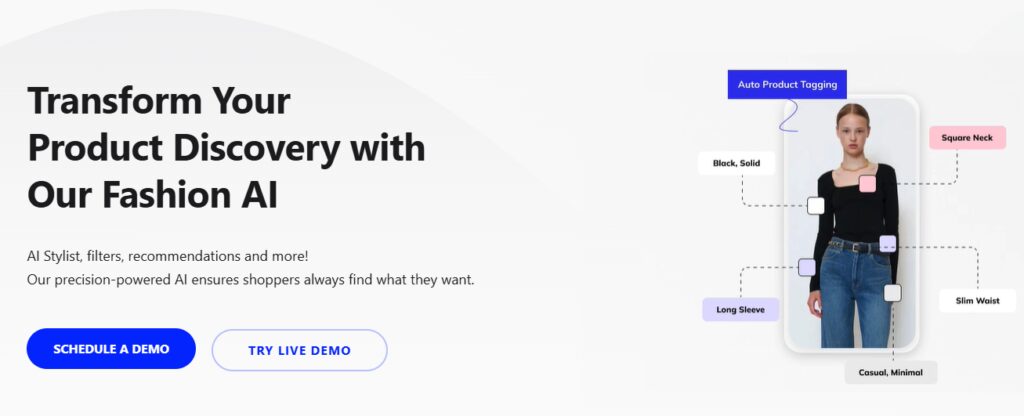
Botika
- Overview: Botika uses AI to automate the design and production processes in fashion, helping brands create new styles and manage inventory more efficiently.
- Key Features: Automated design, virtual samples, inventory management.

Designovel
- Overview: Designovel is an AI platform that assists designers in creating fashion collections by analyzing trends and generating design suggestions.
- Key Features: Trend analysis, design generation, market insights.
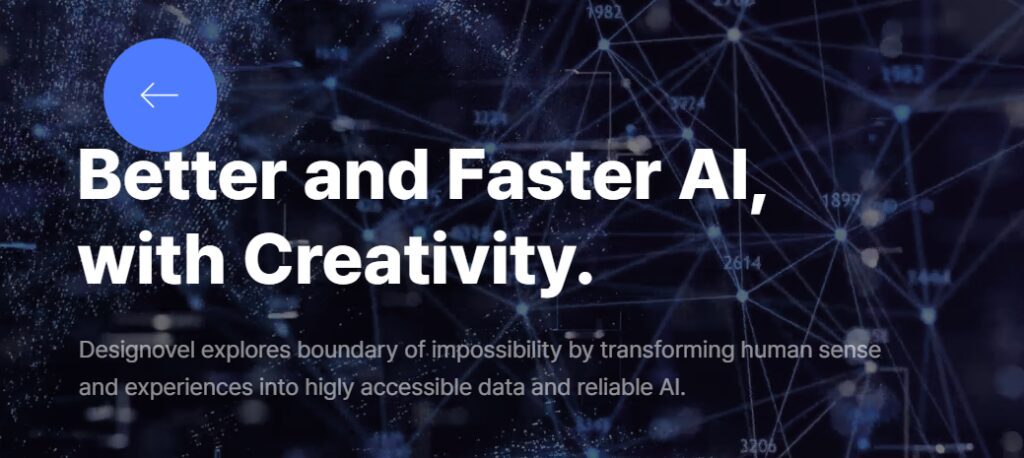
Intelistyle
- Overview: Intelistyle offers AI-driven styling solutions that provide personalized outfit recommendations and virtual styling assistance.
- Key Features: Virtual styling, outfit recommendations, trend analysis.

Ablo
- Overview: Ablo provides AI-powered fashion design and customization tools, allowing designers to create unique, on-demand clothing items.
- Key Features: Custom design, on-demand production, virtual fitting.

Syte
- Overview: Syte uses AI for visual search and personalization in e-commerce, making it easier for customers to find exactly what they’re looking for.
- Key Features: Visual search, product discovery, personalization.

ZMO
- Overview: ZMO uses AI to streamline the fashion design process, from concept to production, ensuring efficient and sustainable fashion creation.
- Key Features: Design automation, sustainable production, AI-driven customization.

CALA
- Overview: CALA offers an end-to-end AI platform for fashion design and production, simplifying everything from initial design to final delivery.
- Key Features: Design collaboration, supply chain management, production tracking.
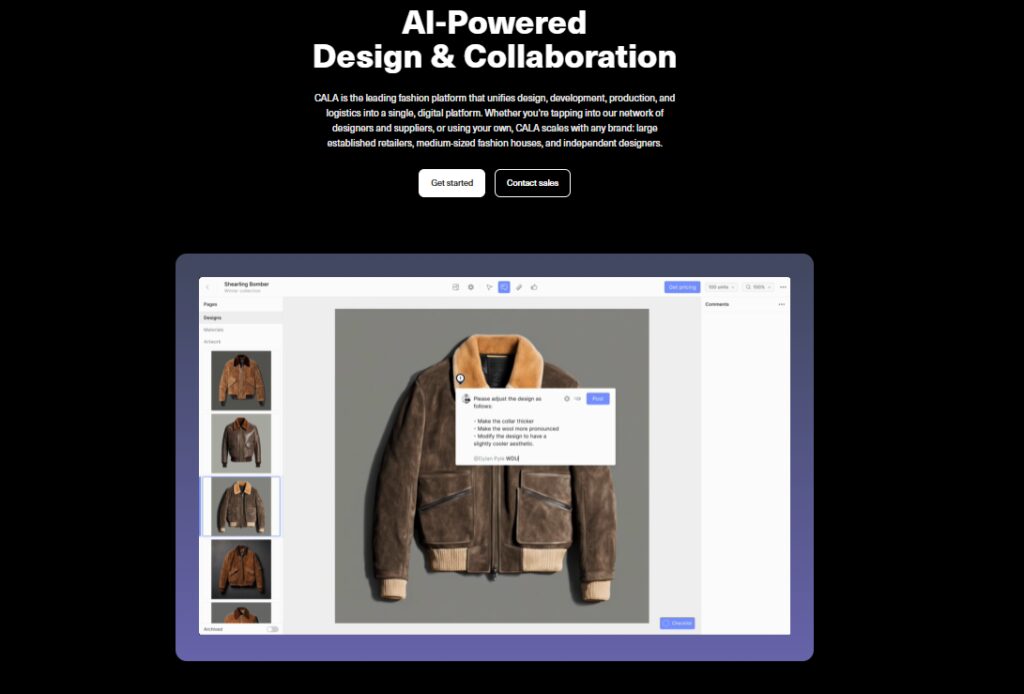
Off/Script
- Overview: Off/Script uses AI to analyze fashion trends and consumer behavior, providing actionable insights to designers and brands.
- Key Features: Trend analysis, consumer behavior insights, market research.
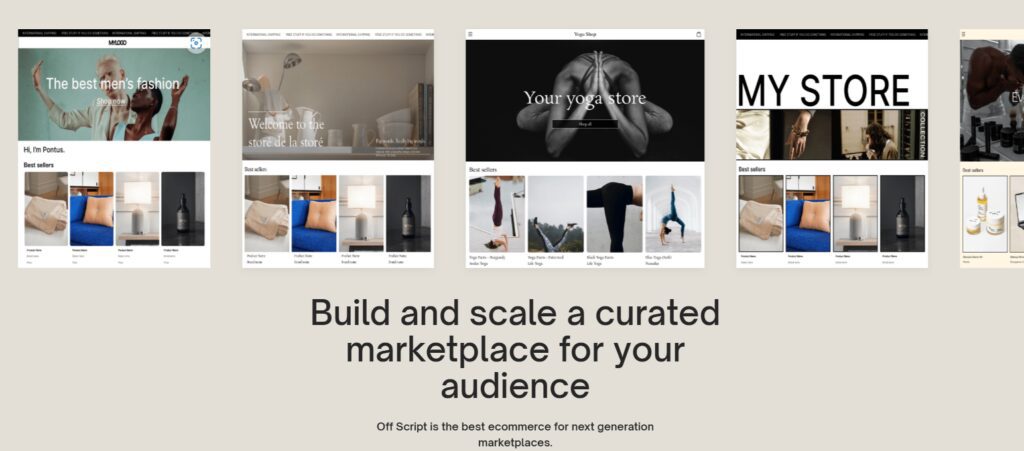
True Fit
- Overview: True Fit uses AI to help shoppers find the right fit by analyzing body measurements and style preferences.
- Key Features: Fit recommendation, size prediction, personalized shopping.

These AI tools are revolutionizing the fashion industry by enhancing creativity, improving efficiency, and offering deeper insights into trends and consumer preferences. By leveraging these technologies, fashion brands can stay competitive and meet the ever-changing demands of the market.